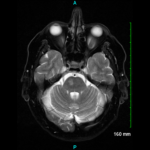 EULAR 2021—Temporal arteritis is the term previously applied to giant cell arteritis (GCA), given the predilection for this large vessel vasculitis to involve the temporal arteries. However, recent work on the manifestations of this disease demonstrate GCA is far more complex than previously understood. At EULAR 2021, Sarah Mackie, BMBCh, PhD, MRCP, associate clinical professor in vascular rheumatology, University of Leeds, U.K., provided an overview of the diagnosis and management of GCA.
EULAR 2021—Temporal arteritis is the term previously applied to giant cell arteritis (GCA), given the predilection for this large vessel vasculitis to involve the temporal arteries. However, recent work on the manifestations of this disease demonstrate GCA is far more complex than previously understood. At EULAR 2021, Sarah Mackie, BMBCh, PhD, MRCP, associate clinical professor in vascular rheumatology, University of Leeds, U.K., provided an overview of the diagnosis and management of GCA.
Evaluation & Diagnosis
Diagnosing GCA can be challenging. Many of the symptoms are systemic and non-specific, and even more specific findings, such as anterior ischemic optic neuropathy, can be seen in other conditions or have close mimics (i.e., non-arteritic anterior ischemic optic neuropathy), noted Dr. Mackie. Temporal artery biopsy is frequently used to provide a pathologic diagnosis, but false-negative biopsy results are not uncommon.
Patients with GCA have traditionally been treated with high-dose glucocorticoids with a prolonged, slow taper, but the relapse rate may be as high as 50%. Risk factors for relapse include elevated baseline inflammatory markers and large vessel involvement.
Vision & GCA
Permanent vision loss is among the most feared complications of GCA. On this subject, Dr. Mackie noted the potential benefits of a fast-track evaluation pathway. Monti et al. conducted a study in which 63 patients with suspected GCA were fast-tracked to evaluation with an expert rheumatologist within one day and underwent clinical evaluation and color duplex sonography. The outcomes for these patients were compared with a historical cohort of 97 patients who were evaluated via the conventional approach prior to introduction of the fast-track assessment process.
The researchers found the relative risk of blindness in the conventional group was 2.11 (95% confidence interval [CI] 1.02–4.36; P=0.04) compared with the fast-track assessment group.1 These results indicate fast-track assessments may provide significant benefits for patients in terms of preventing long-term disability from disease.
With regard to screening for disease, Dr. Mackie discussed the halo sign, a periluminal dark ring detected by color Doppler ultrasonography of the temporal arteries. This sign can be a helpful, non-invasive indicator of potential GCA. However, it’s possible to see the halo sign in the context of conditions other than GCA, such as atherosclerosis, narrow-angle glaucoma, non-Hodgkin’s lymphoma, skull base osteomyelitis and neurosyphilis. Dr. Mackie said some evidence indicates patients with GCA who demonstrate a halo sign around the vertebral artery may be at increased risk of stroke.2
Diplopia in patients with GCA is a concerning indication of possible impending vision loss. Mournet et al. evaluated 14 patients with GCA who presented with diplopia. Using high-resolution, 3D, contrast-enhanced magnetic resonance imaging (MRI), researchers detected third cranial nerve enhancement in seven out of eight patients with third cranial nerve impairment. None of the patients without diplopia showed third cranial nerve enhancement on MRI.

